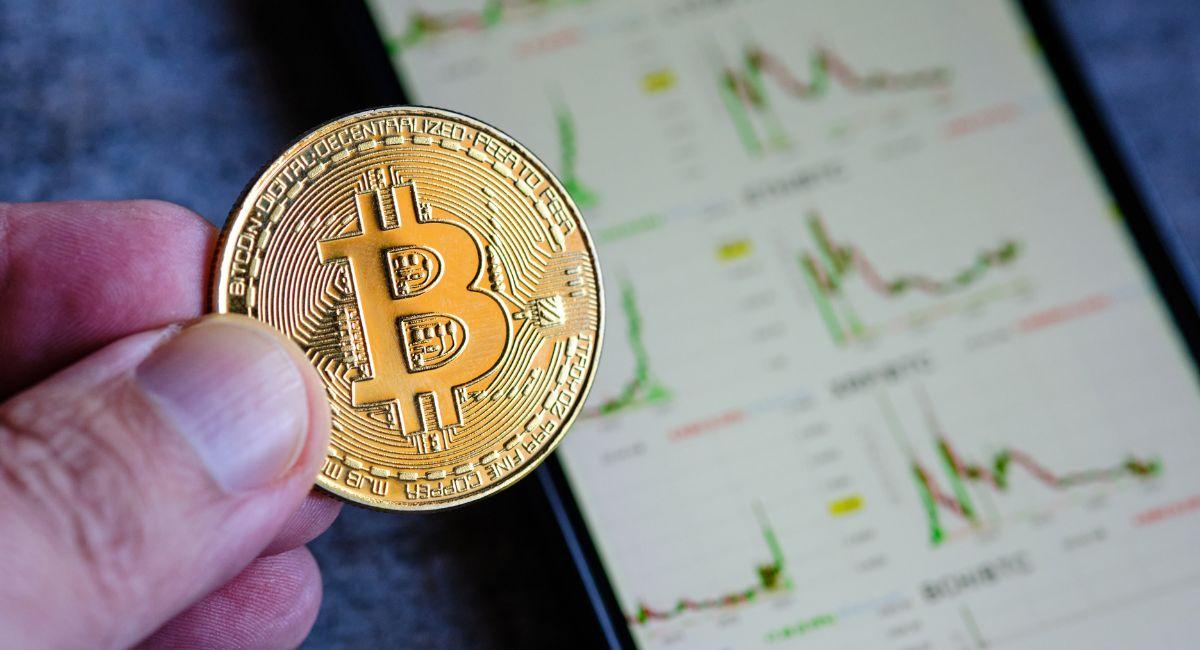January 17, 2024 by Diana Ambolis
261
The term “Frozen Funds” in Crypto space refers to the intentional immobilization or restriction of access to certain cryptocurrency assets. This mechanism is employed for various reasons, ranging from security measures to legal compliance. In this comprehensive article, we delve into the concept of frozen funds in crypto, exploring its definition, the reasons behind its
The term “Frozen Funds” in Crypto space refers to the intentional immobilization or restriction of access to certain cryptocurrency assets. This mechanism is employed for various reasons, ranging from security measures to legal compliance. In this comprehensive article, we delve into the concept of frozen funds in crypto, exploring its definition, the reasons behind its implementation, and the utility it brings to the dynamic world of digital assets.
Defining Frozen Funds in Crypto:
Frozen funds in the crypto realm involve the temporary or permanent immobilization of specific cryptocurrency assets, preventing the owner or any other party from accessing or utilizing them. This process is typically executed through technical measures or legal actions, and the reasons behind freezing funds can vary widely.
Top 10 Common Reasons for Frozen Funds in Crypto:

Freezing funds in the cryptocurrency space is a mechanism used for various reasons, often tied to regulatory compliance, security, or legal requirements. Here are some common reasons for freezing funds in crypto:
- Legal Compliance:
- Regulatory Enforcement: Regulatory authorities may instruct crypto exchanges or financial institutions to freeze funds associated with accounts involved in illegal activities, fraud, or other regulatory violations.
- AML (Anti-Money Laundering) and KYC (Know Your Customer) Compliance:
- Suspicious Transactions: Funds may be frozen if a user’s transactions trigger suspicion of money laundering, terrorist financing, or other illicit activities. Platforms are obligated to comply with AML and KYC regulations and may suspend accounts for further investigation.
- Fraud Prevention:
- Security Concerns: Crypto platforms may freeze funds if they detect suspicious activities, such as unauthorized access to accounts, hacking attempts, or other security threats. This is done to protect users and prevent financial losses.
- Court Orders and Legal Proceedings:
- Judicial Actions: Courts may issue orders to freeze funds as part of legal proceedings. This could happen in cases of disputes, bankruptcy, or other legal actions where the court deems it necessary to protect the assets involved.
- Exchange Policies:
- Terms of Service Violations: Crypto exchanges and platforms may freeze funds if users violate their terms of service. This could include engaging in prohibited activities or breaching the platform’s policies.
- Token Issuers’ Actions:
- Smart Contract Functions: In the case of tokens running on smart contracts, token issuers may have the ability to freeze or confiscate funds. This is often done to address security vulnerabilities, correct errors, or respond to community decisions.
- Wallet Blacklisting:
- Blacklisted Addresses: Some cryptocurrencies or blockchain networks have mechanisms to blacklist specific wallet addresses. Funds associated with blacklisted addresses may be frozen to prevent further transactions.
- Compliance with Sanctions:
- International Sanctions: Crypto platforms, especially those that operate globally, may freeze funds to comply with international sanctions imposed on individuals, entities, or countries.
- User-Requested Freezing:
- User Complaints: In some cases, users may request freezing their own funds due to suspected unauthorized access or fraudulent activities on their accounts. Platforms may comply with such requests after verifying the user’s identity.
- Smart Contract Upgrades:
- Token Contract Modifications: Token projects might freeze or migrate tokens during smart contract upgrades or improvements. This is typically communicated to users in advance, and it aims to enhance the functionality or security of the token.
It’s essential for users to be aware of the terms and conditions of the platforms they use, as well as the regulatory environment governing their activities. Being compliant with AML and KYC procedures, following platform rules, and conducting transactions in a transparent and legal manner can help users avoid situations where their funds might be frozen for reasons beyond their control.
The Utility of Frozen Funds in Crypto:
Frozen funds in the crypto space serve various purposes and can be utilized for different reasons, depending on the context and the entity responsible for the freeze. Here are some key utilities of frozen funds in the cryptocurrency ecosystem:
- Security and Fraud Prevention:
- Protection Against Unauthorized Access: Freezing funds is often a security measure to prevent unauthorized access, fraudulent activities, or potential hacking attempts. This protects the account or wallet owner from financial losses and ensures the security of the platform.
- Regulatory Compliance:
- Enforcement of Regulations: Frozen funds are used to comply with regulatory requirements and legal obligations. Crypto exchanges and financial institutions may freeze funds associated with accounts involved in illicit activities, money laundering, or other violations of local or international regulations.
- Investigation and Due Diligence:
- Conducting Investigations: Funds may be frozen temporarily during an investigation into suspicious transactions, account takeovers, or other security-related incidents. This freeze allows the platform to conduct a thorough examination before taking further actions.
- AML (Anti-Money Laundering) and KYC (Know Your Customer) Compliance:
- Preventing Money Laundering: Frozen Funds play a role in complying with AML and KYC regulations. Suspicious transactions trigger freezes to prevent money laundering, terrorist financing, or any other activities that may violate these compliance standards.
- Legal Proceedings:
- Asset Protection: In legal proceedings or disputes, Frozen funds can be a protective measure. Courts may issue orders to freeze assets to prevent unauthorized transfers or to secure assets during the resolution of legal matters.
- Exchange Policies and Terms of Service:
- Enforcing Platform Rules: Crypto exchanges and platforms may freeze funds in cases of violation of their terms of service or platform policies. This ensures users adhere to the rules set by the platform, and frozen funds may only be released upon resolution of the issue or fulfillment of certain conditions.
- Smart Contract Management:
- Addressing Vulnerabilities: In decentralized applications (DApps) and smart contracts, frozen funds can be a mechanism to address vulnerabilities or correct errors. Token issuers may freeze or upgrade smart contracts to enhance security or fix bugs.
- Protection Against Fraudulent Activities:
- Preventing Scams: Frozen funds can be used to protect users from potential scams or fraudulent activities within the crypto space. Platforms may freeze funds associated with suspicious projects or activities to prevent further harm to the community.
- User-Requested Freezing:
- User Security Requests: Users may request freezing their own funds in case of suspected unauthorized access or fraudulent activities on their accounts. This self-imposed freeze is a security measure initiated by the user to protect their assets.
- Enforcement of Sanctions:
- Complying with Sanctions: Frozen funds can be a tool to comply with international sanctions. Crypto platforms may freeze funds associated with individuals, entities, or countries subject to sanctions imposed by regulatory authorities.
While frozen funds are often viewed as a protective measure, it’s crucial to strike a balance between security and user rights. Platforms must adhere to transparency, communicate clearly with users about the reasons for freezing, and provide a fair and efficient resolution process to maintain trust within the crypto community.
Challenges and Consideration of Frozen Funds in Crypto:
While Frozen funds in the crypto space serves various purposes, it also presents challenges and considerations that need to be carefully addressed to ensure fairness, transparency, and user trust. Here are some challenges and considerations associated with frozen funds in the crypto ecosystem:
- Lack of Regulatory Clarity:
- Uncertain Legal Frameworks: The regulatory landscape for cryptocurrency is still evolving, and there may be a lack of clear guidelines regarding the freezing of funds. Different jurisdictions may have varying rules, making it challenging for platforms to navigate compliance.
- User Rights and Due Process:
- Ensuring Fairness: Freezing funds without proper justification or due process may infringe on user rights. It’s essential to establish clear procedures for freezing and unfreezing funds, ensuring users have the opportunity to address issues and present evidence.
- Communication and Transparency:
- Clear Communication: Lack of transparent communication about the reasons for Frozen funds can lead to confusion and mistrust. Crypto platforms need to communicate clearly with users, providing detailed explanations for the freeze and outlining the steps for resolution.
- Overreliance on Centralized Entities:
- Centralized Authority Risks: In centralized exchanges or platforms, the decision to freeze funds is often centralized. This raises concerns about the concentration of power and the potential for abuse or errors in decision-making.
- Smart Contract Risks:
- Code Vulnerabilities: In decentralized applications and smart contracts, frozen funds may be governed by code. Code vulnerabilities or bugs can lead to unintended freezes, emphasizing the need for thorough auditing and testing before deploying smart contracts.
- Risk of User Confusion:
- Understanding Freezing Mechanisms: Users may not fully understand the mechanisms behind fund freezing, leading to confusion and frustration. Education and clear documentation about freezing policies can help mitigate user confusion.
- Liability and Accountability:
- Determining Liability: Establishing liability for frozen funds, especially in cases of erroneous freezes, can be challenging. Platforms need to define clear policies regarding liability and accountability to address potential disputes.
- Impact on Trading and Liquidity:
- Market Impact: Freezing large amounts of funds can have a significant impact on liquidity and market dynamics, especially in decentralized finance (DeFi) platforms. Consideration should be given to minimizing disruptions and preventing market manipulation.
- Balancing Security and User Privacy:
- Privacy Concerns: Balancing the need for security with user privacy is crucial. While protecting against unauthorized access and fraud is essential, it’s equally important to respect user privacy rights and handle personal information responsibly.
- Regulatory Compliance Challenges:
- Navigating International Regulations: Cryptocurrency platforms operating globally face challenges in navigating different regulatory frameworks. Compliance with international regulations, including sanctions, requires careful consideration and ongoing monitoring.
- Community Trust and Reputation:
- Impact on Trust: Erroneous or arbitrary freezing of funds can erode trust in the crypto platform. Maintaining a positive reputation and fostering community trust is vital for the long-term success of any crypto service.
- Developing Industry Standards:
- Standardization Efforts: The crypto industry lacks standardized practices for Frozen funds. Collaborative efforts within the industry to establish best practices and standards can contribute to a more transparent and trustworthy environment.
Addressing these challenges requires a combination of clear regulatory frameworks, robust communication strategies, user-centric policies, and ongoing efforts to strike a balance between security measures and individual rights. Crypto platforms must continually evolve their practices to build a secure and reliable ecosystem that respects the interests of users and complies with regulatory requirements.
Conclusion:
Frozen funds in the cryptocurrency space serve as a crucial tool for enhancing security, ensuring regulatory compliance, and facilitating dispute resolution. While their utility is evident in various scenarios, it’s essential to navigate the associated challenges carefully. Striking a balance between security measures, regulatory requirements, and user privacy is imperative for maintaining the integrity and trustworthiness of the evolving crypto landscape. As the industry matures, continuous efforts to refine and standardize freezing mechanisms will contribute to a more robust and secure cryptocurrency ecosystem.

































































